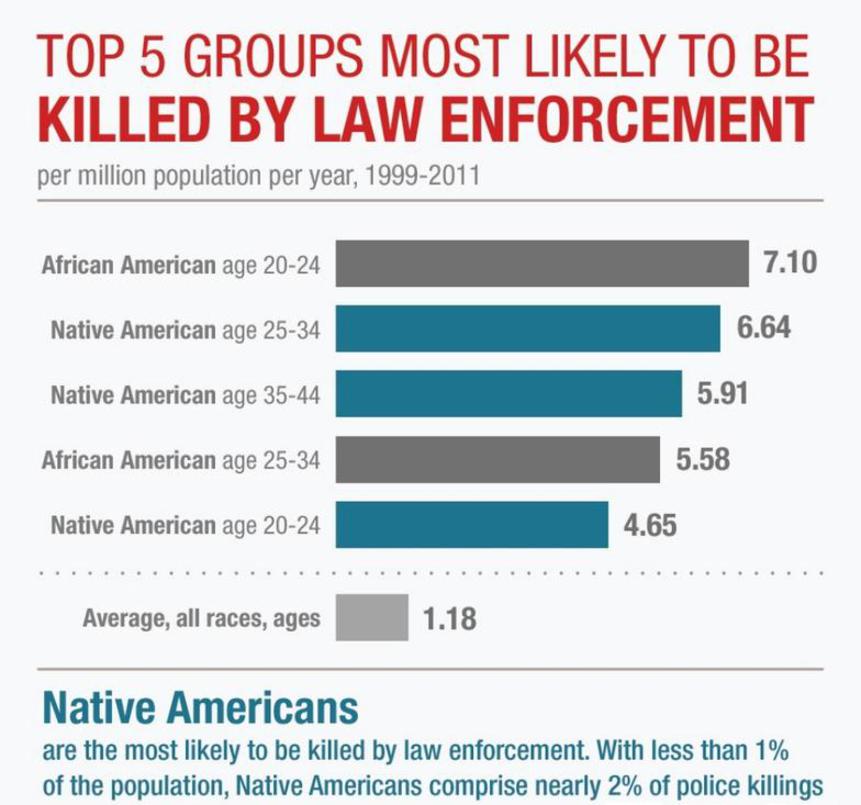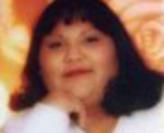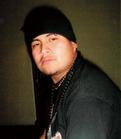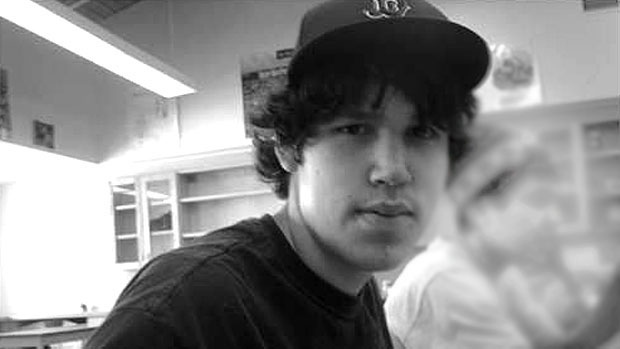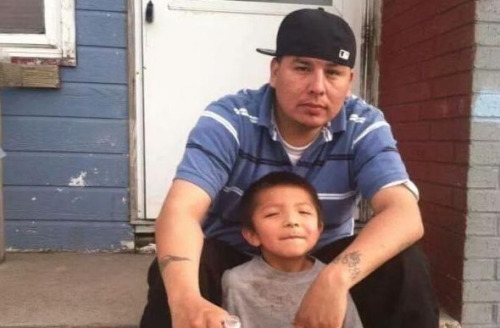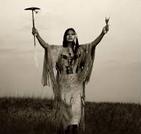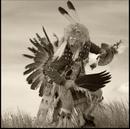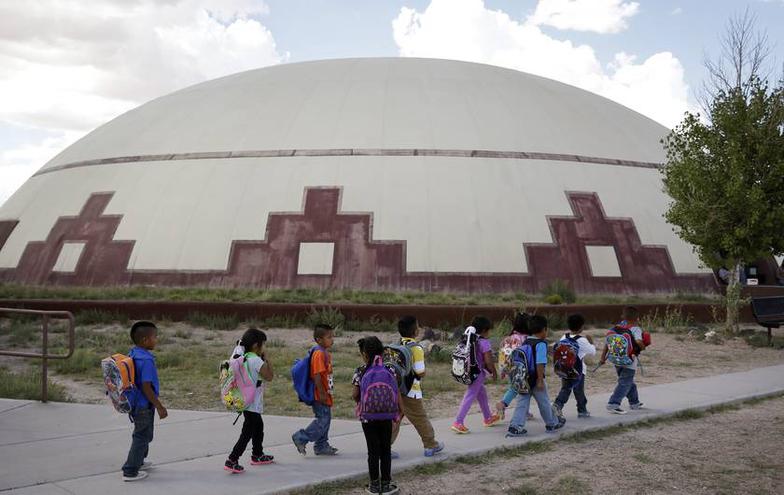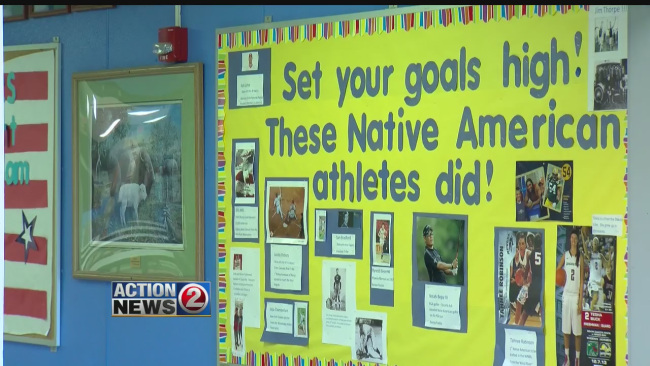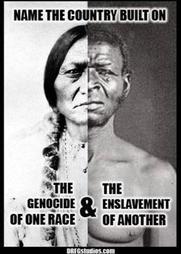Donate
Donate
Donate
Donate
I Believe That Every Single One Of Us,Has A Responsibility To Get Involved In Trying To Make A Difference In The World. Our Generation Faces Many Challenges, Some Of Which Were Passed On To Us By The Past Generations, But It's Up To Us To Find Solutions Today So That We Don't Keep Passing Our Problems On.Each One Of Us Can Make A Difference. Together We Make Change.
African American Refugee Immured American Genocide Mr.H לוחם של אלוהים
אלוהים אנא שמור על
עמך עתיק
Donate
Design and written by
Mr Michael L Hubbard
1.We are requested a centralized and federally operated up-to-date police misconduct tracking systems 2.Teaching the truth about America's History (Not His-Story) and the true treatment of people of color in America's History 3. Giving psychological aid to people of color who are suffering from Post-Traumatic Stress Disorder,because of their treatment by law enforcement and media coverage 4. Restoring voting rights to people of color who were targeted by the so called war on drugs,that has directly affected the voting power of the Afro-American 5. Requesting that we are allow to appear before the United Nations and International Court of Justice,at The Hague 6.We are asking that you sign a petition asking for relief from the United Nations ,for the relentless and unyielding genocide actions against the Afro-Americans and other people of color by the United States Government 7. Reforming the Laws that are designed to incarcerate people of color 8.We need a national dialog about amending the 13th Amendment. Current implications of the punishment clause 9. We need a Government investigation on why Police arrest black Americans for drug crimes at twice the rate of whites, according to federal data, despite the fact that whites use drugs at comparable rates and sell drugs at even higher rates 10.
PART OF THE AMERICAN RAINBOW MOBILE MUSEUM FAMILY
Donate
Donate
Donate
Donate
Donate
Donate
Donate
Donate
Donate
Donate
Donate
Donate
Donate
Donate
Donate
 | ||||||
Castaway was a Lakota Sioux. His death brings up a rarely-discussed aspect of the ongoing conversation around police brutality in the United States: Native Americans are more likely than most other racial groups to be killed by police. Indian Country Today noted that according to the Center on Juvenile and Criminal Justice, a nonprofit organization that studies incarceration and criminal justice issues, police kill Native Americans at a higher rate than any other ethnic group.
The center's analysis relied on data from the Centers for Disease Control and Prevention and the National Center for Health Statistics. It found that Native Americans, making up just .8 percent of the population, are the victims in 1.9 percent of police killings. When the numbers are broken down further, they reveal that Native Americans make up *three of the top five top age-groups killed by law enforcement:
"This is a reflection of an endemic problem in the perception of non-white people when it comes to the administration of justice," Chase Iron Eyes, an attorney with the Lakota People's Law Project in South Dakota, told Mother Jones. The group put out a report called "Native Lives Matter" in February discussing various ways the justice system disproportionately impacts Native Americans. He said the US Department of Justice needs to address police violence against Native Americans and that Castaway's death is only the most recent example of the problem.
"You can tell they're shooting out of fear," he said. "If it's not out of hate, for some reason they're pulling the trigger before determining what the situation actually is. Something does need to happen. Somebody does need to take a look and we need help."
Americans are up in arms right now over the near epidemic number of deaths of African-American at the hands of police, and rightfully so. African-Americans make up only 13 percent of the population, yet they are the victims in 26 percent of all police shootings. That is nearly 3 times the rate of whites.
The outrage by the #Black Lives Matter movement is founded in statistical evidence which shows that the system inherently and with extreme bias disproportionately targets blacks.
That being said, there is one group who no one is talking about that is targeted more than everyone else. The racial group most likely to be killed by law enforcement is Native Americans. While Native Americans only make up 0.8 percent of the population, they make up 1.9 percent of all police killings.
Despite gaining citizenship rights in 1924, Native Americans have yet to see the day that they enjoy benefits of a nation which boasts “liberty and justice for all.”
Unsettling reports of unfair treatment towards Native peoples by law enforcement are not isolated incidents—rather they are endemic of a deeply discriminatory justice system. Native American men are admitted to prison at four times the rate of white men and Native women at six-fold the rate of white women. Additionally, Native Americans are the racial group most likely to be killed by law enforcement.
Joy Ann Sherman (Lakota)
Mitchell, South Dakota– On November 8th, Joy Ann Sherman was shot by police in Mitchell, SD. Joy Ann Sherman reportedly called a counselor at a drug and alcohol abuse facility from her hotel room, where she stated she had a gun and was going to hurt herself. The counselor contacted the Mitchell police. The responding officer spoke to Joy Ann twice on the phone where she again stated that she had a gun and was going to hurt herself. When the officer approached her hotel room he reported seeing the door opening and feared for his life. He fired three shots. Joy Ann Sherman was transferred to a Sioux Falls hospital where she later died from injuries.
Christina Tahhahwah (Comanche)
Lawton, Oklahoma– On November 13, the family of Christina Tahhahwah called the police to ask for assistance in bringing her to the hospital in order to receive medical care. Christina Tahhahwah, who was at her grandparents’ home at the time, suffered from bi-polar disorder and had recently stopped taking her medication. When the police arrived Christina became angry and refused to go with the police.
She was arrested, charged with trespassing, and placed into police custody. On Nov 14th, she was discovered “unresponsive” in her cell. She had gone into cardiac arrest and was transferred to a hospital where she later died. The family was not notified of her transfer to the hospital until 2 AM on Nov 15th, over 12 hours after the transfer.
Fellow inmates stated that Christina Tahhahwah had been tasered repeatedly for refusing to stop singing Comanche hymns.
Myles Roughsurface (Navajo)
Spencerville New Mexico– On November 28th, a San Juan County Sheriff’s Deputy was flagged down by two men to report a scuffle. As deputies arrived on the scene they reported hearing gun shots and called for additional backup. Five deputies approached what they described as “silhouette” of a person and fired two shots. They report a man yelling “you missed”. The officers repositioned themselves and fired two more shots at the “silhouette”. Myles Roughsurface fell to the ground dead.
17-year old Hoopa tribal member (name withheld)
Eureka California– On December 18th, a California Highway Patrol officer responded to a car crash on Highway 299. When the officer arrived he encountered a 17-year old Hoopa tribal member who had crashed his car into a power pole. The officer reports that the teen attacked him with a machete when he shot the teen. The officer reports waiting in his squad car until backup arrived. The second responding officer used a stun-gun on the shot teen and then, with the help of two passerbys, handcuffed the teen. The teen was later pronounced dead.
Allen Locke (Lakota)
Rapid City South Dakota– On December 20th, Rapid City police were dispatched to the Lakota Community Homes subdivision. There officer Anthony Meirose confronted and shot Allen Locke up to five times. Locke was pronounced dead at the scene. The day before the shooting Locke had participated in a #NativeLivesMatter anti-police brutality rally and march in Rapid City. Investigation into the shooting is on-going.
Naverone Christian Landon Woods (Gitxsan First Nation)
Surrey British Columbia– On December 28th, Naverone Christian Landon Woods (Gitxsan First Nation) was killed by Surrey Transit police in Surrey British Columbia. Transit police report being called to a convenience store located near the Surrey Central SkyTrain station where they encountered Woods, reportedly with a knife, where the fatal shooting took place.
Investigators with the Independent Investigations Office continue to look into the incident.
The Police Are Killing One Group at a Staggering Rate, and Nobody Is Talking About It
 | ||||||
The end of 2014 was a bloody time for Native Americans.
There are 5.1 million American Indians and Alaska Natives in the U.S. as of 2011, significantly fewer than the country's 45 million black Americans (as of 2013). But like black Americans, indigenous people are killed by law enforcement officers at rates that far outstrip their share of the population.
While #BlackLivesMatter evolved into a national rallying cry for racial justice over the summer, a largely overlooked #NativeLivesMatter movement has been quietly galvanizing activists as well. Few mainstream outlets report on it, but the indigenous blogosphere and Twitterverse abound with horror stories, not the least of which is that six Native men and women were killed by police in November and December alone.
"We protest, we take to social media, we get as many stories and Native American voices as we can into news media," Simon Moya-Smith, a journalist and editor with Indian Country Today Media Network, told Mic in an email. "[But still] we're not entirely on [the mainstream media's] radar – maybe for Indian mascots, but for police brutality? Barely, if at all."
In some of these cases, including Allen Locke's, the victims were allegedly armed when killed. But this designation doesn't always tell the whole story. In cases like that of John T. Williams in 2010, for example, the knife the victim held that prompted Seattle police to take his life was a carving instrument, folded shut at the time of his shooting.
Williams' death set off a string of protests in early 2011. Although the officer who shot the 50-year-old resigned eventually, he was never charged with a criminal offense. It's a sad but familiar story for anyone who watched grand juries fail to indict Officers Darren Wilson and Daniel Pantaleo for killing Brown and Garner, respectively.
 | ||||||
A peaceful patch of farmland in southeastern Idaho likely holds a grisly, bitter history — but the full story remains hidden, at least for now.
Archaeologists surveying acreage along the Bear River, just north of the town of Preston, say there are “compelling” signs that it’s the site of an event whose gruesomeness is matched only by its obscurity: the largest single massacre of Native Americans in U.S. history.
The researchers say their investigations may ultimately bring to light the lost story of the Bear River Massacre, a daybreak raid carried out by U.S. soldiers on a winter village of the Northwest Band of Shoshone, killing as many as 250 men, women and children on a January morning in 1863.
“It is really pretty amazing that the single largest Indian massacre is very poorly known,” said Dr. Ken Cannon, an archaeologist with USU Archeological Services who recently led a survey of the site.
“If you go through all your history books, you’re not going to find anything that’s taught [about this]. …
“So if we are able to find physical remains of the massacre, that might make it more accessible to people, to get people talking more about this event.”
Last year, the Idaho State Historical Society hired Cannon’s firm to conduct the first-ever archaeological investigation related to the incident, with a view to determining where exactly it took place and identifying any artifacts, so that the site could be commemorated as a historic battlefield.
Despite the infamy of the event, its physical legacy has been hard to track, Cannon said.
“The general area was known, but what’s been frustrating us is that there’s been so much modern construction that’s gone on there,” he said.
Traces of the destroyed Shoshone village have been all but obliterated by generations of infrastructure, from a narrow-gauge railroad laid down through the site in the late 1800s, to a canal dredged decades later, to a modern federal highway that runs nearby.
“We have a sense of where the pieces and parts were, but actually finding the exact location, that’s been frustrating in some respects,” Cannon said.
“But it’s archaeology, and it’s a process that we just have to work through.”
[See a recent discovery from the late 1800s: “‘Mysterious’ Winchester Rifle From 1882 Found Leaning Against Tree in Nevada National Park“]
Among the tools his team has called on are three historic maps, drawn by witnesses of the massacre, which have helped the researchers identify landmarks and ultimately recreate what Cannon calls “that one horrible morning.”
According to accounts from the time, at dawn on January 29, 1863, a regiment of 200 California Volunteers approached a village where some 390 members of the Northwestern Band of Shoshone were wintering, near the confluence of the Bear River and a frozen creek.
The aim of the regiment’s commander, Col. Patrick Connor, was to “chastise” the Shoshone, as he put it in a letter to the War Department, for a series of recent raids and deadly attacks on white settlers.
Having spotted the village from a nearby bluff to the southeast, Connor sent troops down to the floodplain and across the Bear, where they opened fire.
Shoshone riflemen returned fire, killing about 14 of the Volunteers. In response, Connor sent down another wave of troops to surround and subdue the village.
“That set up what initially was a battle, but that lasted a very short period of time,” Cannon said.
“The Shoshone probably ran out of ammunition, and they were overwhelmed by the California Volunteers.
“And then that’s when it becomes a massacre, when [the Volunteers] flanked and routed the village and started killing men, women and children where they stood.”
Witnesses describe Shoshone fleeing into the frozen river, where some drowned and others later froze to death. Another account tells of a baby found alive the next day, perched high in a tree, presumably placed there by a parent in a desperate bid to protect it.
Although the final counts vary, most estimates place the toll at 23 soldiers, and approximately 250 Shoshone, killed in the span of about four hours.
The Battle at Bear River is not one that the general public may have etched in their memories, but for the members of the Shoshone tribe of Native Americans, it is an incident that lives in infamy.
On Tuesday, descendants of the Shoshani Indians gathered near the site in present-day Idaho where hundreds of their relatives were slaughtered 150 years ago.
The Massacre at Bear River took place in 1863 when heightened tensions between the Native Americans and federal troops from the California reserves reached a tipping point.
On the morning of January 29, 1863, Colonel Patrick Connor led his troops from Fort Douglas, Utah towards the snow-covered plains near Shoshani chief Bear Hunter's camp near what is now known as Preston, Idaho.
The Shoshone Indians are a fairly well-known tribe with descendants in Nevada, Oregon, Utah, Wyoming, and California. One of their most famous members was Sacagawea who accompanied storied explorers Meriwether Lewis and William Clark in the early 1800s.
In spite of the advancements made in the first half of the 19th century, the Massacre of Bear River was nowhere near a fair fight.
While the Native Americans had collected a few firearms from various raids on other villages, their weapons were nothing compared to the guns used by the soldiers.
Because this battle took place in the midst of the Civil War, Colonel Connor's men from the California Volunteers were armed with federally-issued guns.
The battle plan made it clear that the soldiers intended to amass as many casualties as possible.
They pressured the Native Americans into a ravine and, while standing from above, they shot at them below. As some tried to flee by diving into the freezing river, they also became targets.
All told, 384 members of the Shoshoni Indian tribe were killed and 67 soldiers died in the battle, according to Heritage Preservation Services.
In addition to fighters, many of the victims were women and children. A number of women were raped and assaulted by the soldiers.
One of the Chiefs who survived was Chief Sagwitch, and even he did not escape unscathed. He was shot twice in the hand, attempted to ride off by horseback before the horse was shot, and then the swam out to safety via a hot spring.
Chief Sagwitch’s son Beshup Timbimboo also made an incredible survival, as he was reportedly shot seven times but survived. One of his descendants who has kept their name was present at today’s memorial service.
Patty Timbimboo-Madsen tied an item of remembrance on to a tree at the memorial, keeping the legend of their massacre alive.
Native American
Genocide Still Haunts
United States
When Will It In
 | ||||||
 | ||||||
 | ||||||
 | ||||||
In the past, the main thrust of the Holocaust/Genocide Project's magazine, An End To Intolerance, has been the genocides that occurred in history and outside of the United States. Still, what we mustn't forget is that mass killing of Native Americans occurred in our own country. As a result, bigotry and racial discrimination still exist.
"In 1492, Columbus sailed the ocean blue" . . . and made the first contact with the "Indians." For Native Americans, the world after 1492 would never be the same. This date marked the beginning of the long road of persecution and genocide of Native Americans, our indigenous people. Genocide was an important cause of the decline for many tribes.
"By conservative estimates, the population of the United states prior to European contact was greater than 12 million. Four centuries later, the count was reduced by 95% to 237 thousand.
In 1493, when Columbus returned to the Hispaniola, he quickly implemented policies of slavery and mass extermination of the Taino population of the Caribbean. Within three years, five million were dead. Las Casas, the primary historian of the Columbian era, writes of many accounts of the horrors that the Spanish colonists inflicted upon the indigenous population: hanging them en mass, hacking their children into pieces to be used as dog feed, and other horrid cruelties. The works of Las Casas are often omitted from popular American history books and courses because Columbus is considered a hero by many, even today.
Mass killing did not cease, however, after Columbus departed. Expansion of the European colonies led to similar genocides. "Indian Removal" policy was put into action to clear the land for white settlers. Methods for the removal included slaughter of villages by the military and also biological warfare. High death rates resulted from forced marches to relocate the Indians.
The Removal Act of 1830 set into motion a series of events which led to the "Trail of Tears" in 1838, a forced march of the Cherokees, resulting in the destruction of most of the Cherokee population." The concentration of American Indians in small geographic areas, and the scattering of them from their homelands, caused increased death, primarily because of associated military actions, disease, starvation, extremely harsh conditions during the moves, and the resulting destruction of ways of life.
During American expansion into the western frontier, one primary effort to destroy the Indian way of life was the attempts of the U.S. government to make farmers and cattle ranchers of the Indians. In addition, one of the most substantial methods was the premeditated destructions of flora and fauna which the American Indians used for food and a variety of other purposes. We now also know that the Indians were intentionally exposed to smallpox by Europeans. The discovery of gold in California, early in 1848, prompted American migration and expansion into the west. The greed of Americans for money and land was rejuvenated with the Homestead Act of 1862. In California and Texas there was blatant genocide of Indians by non-Indians during certain historic periods. In California, the decrease from about a quarter of a million to less than 20,000 is primarily due to the cruelties and wholesale massacres perpetrated by the miners and early settlers. Indian education began with forts erected by Jesuits, in which indigenous youths were incarcerated, indoctrinated with non-indigenous Christian values, and forced into manual labor. These children were forcibly removed from their parents by soldiers and many times never saw their families until later in their adulthood. This was after their value systems and knowledge had been supplanted with colonial thinking. One of the foundations of the U.S. imperialist strategy was to replace traditional leadership of the various indigenous nations with indoctrinated "graduates" of white "schools," in order to expedite compliance with U.S. goals and expansion.
Probably one of the most ruinous acts to the Indians was the disappearance of the buffalo. For the Indians who lived on the Plains, life depended on the buffalo. At the beginning of the nineteenth century, there were an estimated forty million buffalo, but between 1830 and 1888 there was a rapid, systematic extermination culminating in the sudden slaughter of the only two remaining Plain herds. By around 1895, the formerly vast buffalo populations were practically extinct. The slaughter occurred because of the economic value of buffalo hides to Americans and because the animals were in the way of the rapidly westward expanding population. The end result was widescale starvation and the social and cultural disintegration of many Plains tribes.
Genocide entered international law for the first time in 1948; the international community took notice when Europeans (Jews, Poles, and other victims of Nazi Germany) faced cultural extinction. The "Holocaust" of World War II came to be the model of genocide. We, as the human race, must realize, however, that other genocides have occurred. Genocide against many particular groups is still widely happening today. The discrimination of the Native American population is only one example of this ruthless destruction.
Site of Deadliest Native American Massacre Identified in Idaho
Native Americans remember 'forgotten' massacre that left ...
Wounded Knee, located on the Pine Ridge Indian Reservation in southwestern South Dakota
Wounded Knee, located on the Pine Ridge Indian Reservation in southwestern South Dakota,was the site of two conflicts between North American Indians and representatives of the U.S. government.An 1890 massacre left some 150Native Americansdead, in what was the final clash between federal troops and the Sioux. In 1973,members of the American Indian Movement occupied Wounded Knee for 71 days to protest conditions on the reservation.
WOUNDED KNEE: GHOST DANCE AND SITTING BULL
Throughout 1890, the U.S. government worried about the increasing influence at Pine Ridge of the Ghost Dance spiritual movement, which taught that Indians had been defeated and confined to reservations because they had angered the gods by abandoning their traditional customs. Many Sioux believed that if they practiced the Ghost Dance and rejected the ways of the white man, the gods would create the world anew and destroy all non-believers, including non-Indians. On December 15, 1890, reservation police tried to arrest Sitting Bull, the famous Sioux chief, who they mistakenly believed was a Ghost Dancer, and killed him in the process, increasing the tensions at Pine Ridge.
Did You Know?
Nearly half of the Sioux killed at the 1890 Wounded Knee massacre were women and children.
WOUNDED KNEE: CONFLICT BREAKS OUT
On December 29, the U.S. Army’s 7th Cavalry surrounded a band of Ghost Dancers under Big Foot, a Lakota Sioux chief, near Wounded Knee Creek and demanded they surrender their weapons. As that was happening, a fight broke out between an Indian and a U.S. soldier and a shot was fired, although it’s unclear from which side. A brutal massacre followed, in which it’s estimated 150 Indians were killed (some historians put this number at twice as high), nearly half of them women and children. The cavalry lost 25 men.
The conflict at Wounded Knee was originally referred to as a battle, but in reality it was a tragic and avoidable massacre. Surrounded by heavily armed troops, it’s unlikely that Big Foot’s band would have intentionally started a fight. Some historians speculate that the soldiers of the 7th Cavalry were deliberately taking revenge for the regiment’s defeat at Little Bighorn in 1876. Whatever the motives, the massacre ended the Ghost Dance movement and was the last major confrontation in America’s deadly war against the Plains Indians.
WOUNDED KNEE: AMERICAN INDIAN ACTIVISTS ORGANIZE
The American Indian Movement (AIM) was founded in 1968 in an effort to stop police harassment of Indians in the Minneapolis area. Borrowing some tactics from the anti-war student demonstrators of the era, AIM soon gained national notoriety for its flamboyant protests. However, many mainstream Indian leaders denounced the youth-dominated group as too radical.
In 1972, a faction of AIM members led by Dennis Banks and Leonard Peltier sought to close the divide by making alliances with traditional tribal elders on reservations. They had their greatest success on the Pine Ridge Reservation in South Dakota, after a group of young whites murdered a Sioux named Yellow Thunder. Although Yellow Thunder’s attackers only received six-year prison sentences, this was widely seen as a victory by the local Sioux accustomed to unfair treatment by the often racist Anglo judicial system. AIM’s highly visible publicity campaign on the case was given considerable credit for the verdict, winning the organization a great deal of respect on the reservation.
 | ||||||
 | ||||||
 | ||||||
Americans are up in arms right now over the near epidemic number of deaths of African-American at the hands of police, and rightfully so. African-Americans make up only 13 percent of the population, yet they are the victims in 26 percent of all police shootings. That is nearly 3 times the rate of whites.The outrage by the #Black Lives Matter movement is founded in statistical evidence which shows that the system inherently and with extreme bias disproportionately targets blacks.
That being said, there is one group who no one is talking about that is targeted more than everyone else. The racial group most likely to be killed by law enforcement is Native Americans. While Native Americans only make up 0.8 percent of the population, they make up 1.9 percent of all police killings.Despite gaining citizenship rights in 1924, Native Americans have yet to see the day that they enjoy benefits of a nation which boasts “liberty and justice for all.”
Police are Killing Native Americans at Higher Rate than Any Race, and Nobody is Talking About It
Despite gaining citizenship rights in 1924, Native Americans have yet to see the day that they enjoy benefits of a nation which boasts “liberty and justice for all.”
Unsettling reports of unfair treatment towards Native peoples by law enforcement are not isolated incidents—rather they are endemic of a deeply discriminatory justice system. Native American men are admitted to prison at four times the rate of white men and Native women at six-fold the rate of white women. Additionally, Native Americans are the racial group most likely to be killed by law enforcement.
 | ||||
This Is What Modern Day Discrimination Against Native Americans Looks Like
The news: Despite the furor over the Washington Redskins and Columbus Day, the most serious discrimination against Native Americans doesn't take place at a football game or during a poorly-named day off from work. It starts in schools, and pervades all aspects of a Native American's life as time goes on.
Native American children attend dilapidated, below-standard schools, some of which date from the Great Depression era. The government is supposed to look after the federally-financed schools, but this task is seemingly beyond their ability, or just beyond their ability to care.
In addition to 81 students, Little Singer Community School is also home to asbestos, mold and scores of mice. Students have to carry their seats from class to class, presumably because the school can't afford chairs for each classroom.
 | ||||
"We have little to work with, but we make do with what we have," Verna Yazzie, a school board member, told the Associated Press. Yazzie's school, Little Singer Community School, is located in the Navajo Nation.
The school, AP notes, is "marked by remoteness, extreme poverty and few construction dollars." The government added it to a priority replacement list a decade ago, but cut the school's budget in 2013. Under such conditions, it's no wonder the quality of education suffers. In 2013, fewer than 25% of Little Singer Community School's students were proficient in reading and math.
This isn't an isolated incident. The federal government is responsible for 183 native American schools across 23 states. Little Singer wasn't the only one to perform poorly. As the Atlantic reported, Native American students received much lower marks than their white peers in reading and math on the National Assessment of Educational Progress. Underfunded schooling leads to a decreasing high school graduation rate. Their dropout rate is two times the national average.
This is a systemic problem that has lifelong implications for Native Americans and is just another chapter in a sordid history of discrimination and prejudice — and no, the Navajo Nation winning a lawsuit against the U.S. Government for $554 won't magically solve the problems overnight (though it is encouraging).
Barack Obama recently vowed to reform Native American education and to give more control over schools to the individual tribes, but even if his words are true, it won't be enough to repair the damage that's already been done.
It's not a stretch to think the lackluster education leads the following statistics from the New York Times:
The country's 310 Indian reservations have violent crime rates that are more than two and a half times higher than the national average, according to data compiled by the Justice Department. American Indian women are 10 times as likely to be murdered than other Americans. They are raped or sexually assaulted at a rate four times the national average, with more than one in three having either been raped or experienced an attempted rape.
Maybe it's also the reason why 1 in 4 Native Americans live in poverty and why they continually face double-digit unemployment rates. They also lack access to healthcare and have a lower life expectancy than average.
The takeaway: Discrimination against Native Americans is far more ingrained in the American way of life than just the presence of the Washington Redskins, the thousands of other American teams with racist caricature mascots,and people appropriating/insulting Native American culture from time to time. Native Americans face serious and perhaps insurmountable economic, social, and political hardships in the United States, many of which start as early in their lives as their basic elementary school education. Americans need to be aware of that.
From the beginning of U. S. history, American Native populations and Africans had a historical relationship of both cooperation and confrontation.
Europeans first enslaved Indians, introducing Africans to the Americas shortly after. Nicolas de Ovando, Governor of Hispaniola first mentioned African and Indian interaction in a report, circa 1503. Indians who escaped generally knew the surrounding areas, avoided capture, and returned to help free enslaved Africans. Europeans feared an Indian/African alliance. The first slave rebellion occurred in Hispaniola in 1522, while the first on future United States soil (North Carolina) occurred in 1526. Both rebellions were organized and executed by coalitions of Africans and Indians.
Europeans feared communities of escaped Africans, known as Maroons or quilombos in frontier areas. The largest of these communities, the "Republic of Palmores," originated in the 1600s, and at its peak had a population of approximately 11,000. This community composed primarily of Africans but including Indians, contained three villages, spiritual gather places, shops, and operated under its own legal system. Its army repelled European military attacks until 1694.
White reaction to such communities was extreme despite their limited numbers. Europeans sought to keep the two peoples separated and, if possible, mutually hostile. They taught Africans to fight Indians and bribed Indians to hunt escaped Africans, promising lucrative rewards. Indians who captured escaped Africans received 35 deerskins in Virginia or three blankets and a musket in the Carolinas. Further sowing division, Whites introduced African slavery into the Five Civilized Nations in the United States.
The U. S. government ended slavery among Indians by 1776. From pre-Revolutionary times to the Civil War, the government negotiated treaties with Indian tribes that included promises by the Indians to return escaped slaves. However, while harboring many slaves, they returned none. The most powerful African-Indian alliance linked escaped Africans who had settled in Florida, and Seminoles (a word that means "runaway"), who were fleeing the Creek federation. The Africans taught the Indians rice cultivation, and the groups formed an agricultural and military alliance.
In 1816, a U. S. soldier reported that prosperous plantations existed for fifty miles along the banks of the Apalachicola River. The African-Seminole forces repeatedly repelled U. S. slaveholders' posses and the U. S. Army. The Second Seminole War resulted in 1,600 dead and cost over $40 million. The purchase of Florida from Spain was the U. S. government's attempt to eliminate it as a refuge for runaways. Before the Civil War, many Native American nations on the eastern seaboard of the United States became biracial communities.
African-Americans were well represented in the Trail of Tears. By 1860, the Five Civilized Nations in the Indian Territory consisted of 18 percent African Americans. The Seminoles appointed six Black Seminoles members of its governing council. After the Civil War, the Buffalo Soldiers, six regiments of African American U. S. Army troops, helped to end Indian resistance to U. S. control after the Civil War. The most significant African-Native American was John Horse, a Black Seminole Chief who was a master marksman and diplomat in Florida and Oklahoma and by the time of the Civil War, the Black Seminole Chief in Mexico and Texas.
Horse negotiated a treaty with the U. S. government in 1870. On July 4th of that year, when his Seminole nation crossed into Texas, it was a historic moment: an African people had arrived together as a nation on this soil, under the command of their ruling monarch, Chief John Horse. Today, many African Americans can trace their ancestry in part to an Indian tribe.
African & Native Americans Share A Rich History
 | ||||
Man Awarded $70k In Seattle Police Brutality Case
CCTV Captures Police Brutality Of Native American
Think About It
I am poor and naked, but I am the chief of the nation.We do not want riches but we do want to train our children right.Riches would do us no good. We could not take them with us to the other world.We do not want riches. We want peace and love.Red Cloud, Oglala Lakota Sioux (1822-1909)
Humankind has not woven the web of life. We are but one thread within it. Whatever we do to the web, we do to ourselves. All things are bound together. All things connect.
Chief Seattle, Duwamish (1780-1866)
Whom men fear they hate, and whom they hate, they wish dead. [Lat., Quem metuont oderunt, quem quisque odit periisse expetit.]
The greatest hatred, like the greatest virtue and the worst dogs, is silent.
Hatred is self-punishment. Hatred it the coward's revenge for being intimidated.
Love blinds us to faults, but hatred blinds us to virtues.
Holding anger is a poison. It eats you from inside. We think that hating is aweapon that attacks the person who harmed us. But hatred is a curved blade. Andthe harms we do, we do to ourselves.
In the end, there is no absence of irony: the integrity of what is sacred to Native Americans will be determined by the government that has been responsible for doing everything in its power to destroy Native American cultures.
I remember hearing stories from my mother and father about their parents and grandparents when they were taken off the reservation, taken to the boarding schools, and pretty much taught to be ashamed of who they were as Native Americans. You can feel that impact today.Chaske Spencer
 | ||||||
You have to look deeper, way below the anger, the hurt, the hate, the jealousy, the self-pity, way down deeper where the dreams lie, son. Find your dream. It's the pursuit of the dream that heals you.Billy Mills (father), Oglala Lakota (1938-)
When you know who you are; when your mission is clear and you burn with the inner fire of unbreakable will; no cold can touch your heart; no deluge can dampen your purpose. You know that you are alive.Chief Seattle, Duwamish (1780-1866)
The name 'reservation' has a negative connotation among Native Americans - an intern camp of sorts.
“We need to help students and parents cherish and preserve the ethnic and cultural diversity that nourishes and strengthens this community - and this nation.”
“It Is Time For Parents To Teach Young People Early On That In Diversity There Is Beauty
And There Is Strength.”
“We need to help students and parents cherish and preserve the ethnic and
cultural diversity that nourishes and strengthens this community - and this nation.”
“We need to give each other the space to grow, to be ourselves, to exercise our diversity. We need to give each other space so that we may both give and receive such beautiful things as ideas, openness, dignity, joy, healing, and inclusion.”
"There is a Law that man should love his neighbor as himself. In a few hundred years it should be as natural to mankind as breathing or the upright gait; but if he does not learn it he must perish.
If you hate a person, you hate something in him that is part of yourself. What isn't part of ourselves doesn't disturb us.
Racism is still with us. But it is up to us to prepare our children for what they have to meet, and, hopefully, we shall overcome.Rosa Parks
In America there is institutional racism that we all inherit and participate in, like breathing the air in this room - and we have to become sensitive to it.
If anyone says, "I love God," yet hates his brother, he is a liar. For anyone who does not love his brother, whom he has seen, cannot love God, whom he has not seen.BIBLE, I John 4:20

